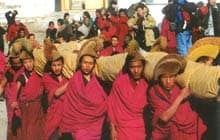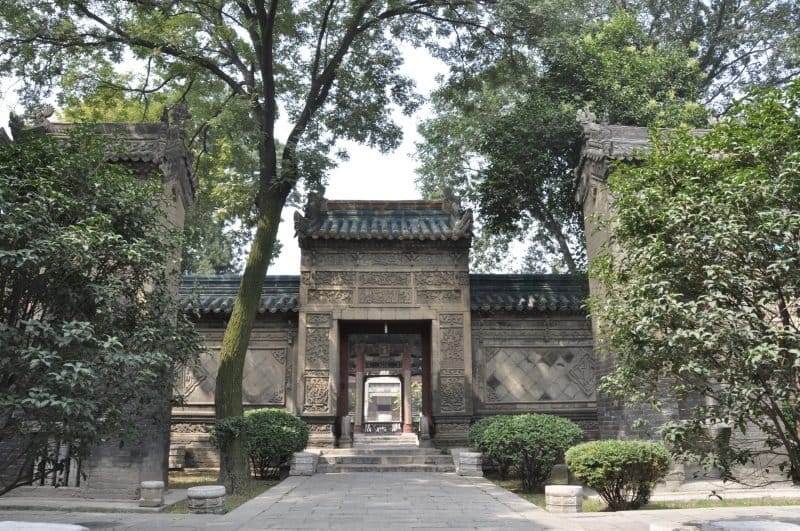Every Tibetan family struggled to afford the honor of sending a family member to a monastery. This indeed was no small sacrifice since the continuing upkeep of the monks was the responsibility of their respective families. To give some idea of the popularity of this religious mission, in the early twentieth century approximately one fifth of all Tibetan men were monks. Though there were also nunneries, their numbers were not as large.
When a young boy, » Read more »
» Read more »The History of the Silk and Fur Roads
The incursions of the Xiongnu, a savage Turkic tribe that regularly pillaged the towns on China’s northern border, prompted the Han Emperor Wudi (r. 140-86BC) to seek Western allies for a joint attack. For this military reconnaissance mission he sent out one hundred men, led by Zhang Qian, who took thirteen years to report back with tales of glittering western cities and alien cultures. » Read more »
» Read more »History
The Naxi are one of China 's 56 recognized ethnicities, and although they have lived on the edge of the Chinese empire for centuries they have preserved many remarkable features of their culture. Some say the Naxi are descended from a group of people known in Chinese historical texts as the Qiang, whose homeland included parts of the Tibetan Plateau as well as the western areas of Sichuan and Yunnan . » Read more »
» Read more »The three Gelug monasteries of Sera, Drepung and Ganden were known collectively as the "Pillars of the State". As such there was naturally political rivalry between them. This can even be seen in the naming of this monastery. Sera, meaning "merciful hail" is a challenge to Drepung monastery, whose name means "rice heap" in the sense that hail damages rice. This rebellious monastery, some of whose monks were famed for their soldiery last challenged power in 1947. » Read more »
» Read more »The impetus for the construction of a palace on Lhasa's Red Hill came from King Songtsen Gampo (608-650) who commissioned it. This was smaller than its 5-square-mile (13-square-km) successor, which was named the Potala ("Pure Land," or "High Heavenly Realm"), after Mount Potalaka in India, the abode of Tibet's patron saint, the Bodhisattva Avalokiteshvara of whom the Dalai Lama is the incarnation.
In 1645, the Fifth Dalai Lama (1645-1693), feeling confined at Drepung Monastery, » Read more »
» Read more »



